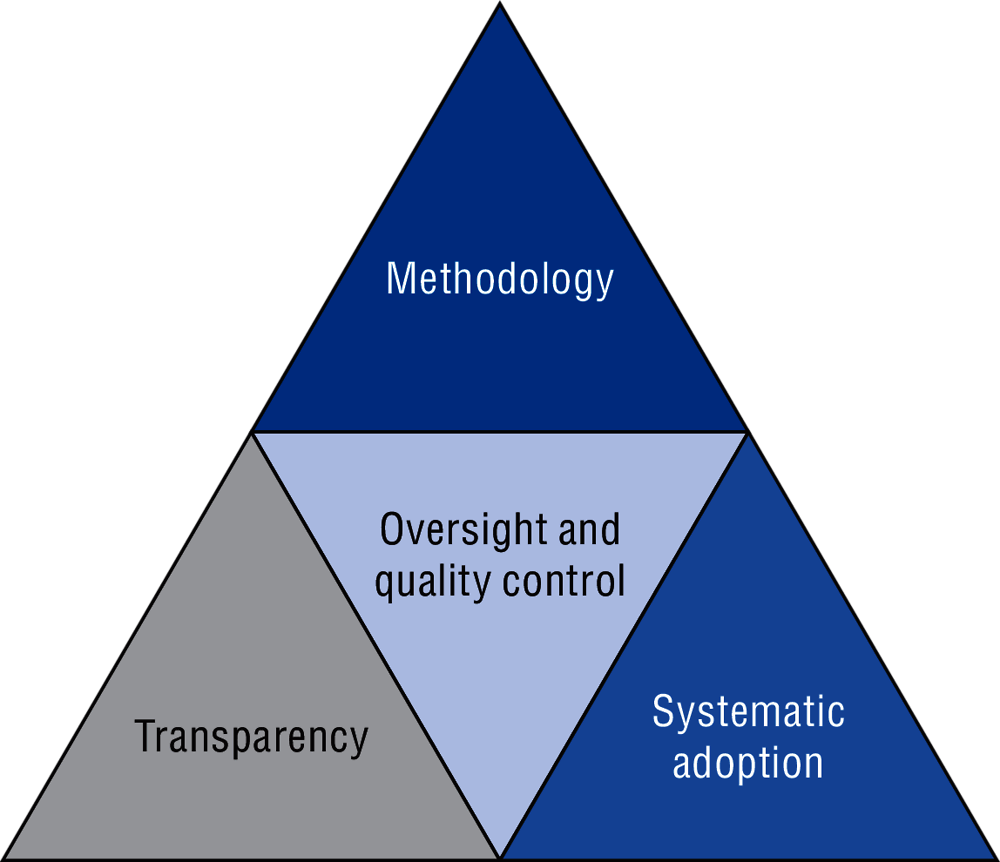copy the linklink copied!Annex C. OECD Indicators of Regulatory Policy and Governance (iREG) for Latin America 2019
The Indicators of Regulatory Policy and Governance (iREG) for Latin America 2019 provide an up-to-date overview of regulatory systems in selected Latin American and Caribbean (LAC) countries, by which they develop, implement and evaluate regulations. The indicators partially cover three principles of the 2012 OECD Recommendation on Regulatory Policy and Governance: 1) stakeholder engagement; 2) regulatory impact assessment (RIA); 3) ex post evaluation and administrative simplification.
iREG for Latin America 2019 draws on responses to the OECD-IDB Surveys on Regulatory Policy and Governance 2015-2016 and 2019 from selected LAC countries. The countries surveyed in 2015-16 were Brazil, Chile, Colombia, Costa Rica, Ecuador, Mexico and Peru. The information collected through the 2015-16 survey reflects the situation as of 31 December 2015. The 2019 survey presents an update of the countries surveyed in 2015-16 and additionally draws on data from Argentina, the Dominican Republic and El Salvador, surveyed for the first time in 2019. The information collected through the 2019 survey reflects the situation as of 31 March 2019. Unless explicitly stated otherwise, survey answers refer to national regulations only, i.e. regulation enacted at the central or federal level of government. Survey answers on stakeholder engagement and regulatory impact assessment only cover subordinate regulations, which are defined as regulations created by the executive that are generally approved by the head of government, a minister or the cabinet.
The OECD-IDB Survey on Regulatory Policy and Governance 2019 is an adapted version of the 2017 OECD Indicators of Regulatory Policy and Governance Survey with a particular focus on stakeholder engagement. The direct comparison between survey results, notably in the form of a composite indicator on stakeholder engagement in developing subordinate regulations, is based on an identical set of survey questions that is included in the different surveys described above.
The survey is based on an ambitious and forward-looking regulatory policy agenda and is designed to track progress in the implementation of regulatory policy over time. It captures progress in countries that already have advanced regulatory practices, while recognising the efforts of countries that are just starting to develop their regulatory policy. In addition to collecting information on formal requirements, the survey gathers evidence on the implementation of these formal requirements and the uptake of regulatory management practices.
Survey answers underwent a thorough data-cleaning process carried out jointly by the OECD and IDB close co operation with the participating countries, which involved notably ensuring consistency between survey answers and the verification of examples provided by countries to support individual survey questions.
The composite indicator
Following the established methodology of the OECD Indicators of Regulatory Policy and Governance, a composite indicator on stakeholder engagement in developing subordinate regulations was developed based on information collected through the survey.
The indicator measures the adoption of good practices to engage with interested parties when developing new regulations, including different methods and openness of consultations as well as transparency and response to comments received. It consolidates information into four equally weighted categories (Figure C.1):
-
1. Systematic adoption records formal requirements and how often and at what stage in the rule-making process these requirements are conducted in practice.
-
2. Methodology gathers information on the methods used to engage with stakeholders, e.g. forms of consultation and documents to support them.
-
3. Oversight and quality control records the role of oversight bodies and publicly available evaluations of the consultation system.
-
4. Transparency records information from the questions that relate to the principles of open government, e.g. whether consultations are open to the general public and if comments and responses by authorities are published.
The maximum score for each category is 1, and the maximum aggregate score for the composite indicator is 4. The more regulatory practices as advocated in the 2012 OECD Recommendation of the Council on Regulatory Policy and Governance a country has implemented, the higher its indicator score. Each category is composed of several equally weighted sub-categories built around specific questions in the OECD-IDB Survey on Regulatory Policy and Governance 2019. The separate sub-categories are listed in Table 7A.1.
The full dataset underlying the composite indicator can be accessed on the website dedicated to the OECD Indicators of Regulatory Policy and Governance for Latin America (www.oecd.org/gov/regulatory-policy/ireg-lac.htm). The complete methodology, including all underlying questions, can be found in Arndt et al. (2015).
References
Arndt, C. et al. (2015), “2015 indicators of regulatory policy and governance: Design, methodology and key results”, OECD Regulatory Policy Working Papers, No. 1, OECD Publishing, Paris, https://doi.org/10.1787/5jrnwqm3zp43-en.
Metadata, Legal and Rights
https://doi.org/10.1787/13130fbb-en
© OECD 2020
The use of this work, whether digital or print, is governed by the Terms and Conditions to be found at http://www.oecd.org/termsandconditions.




